#munmyo
Text


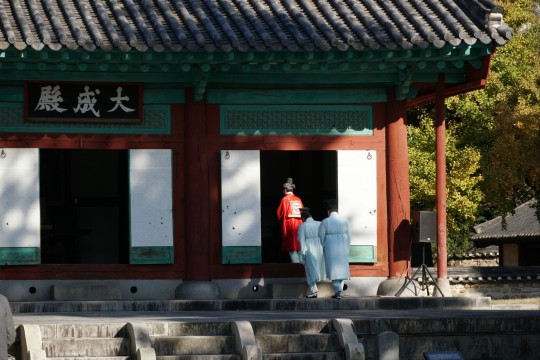
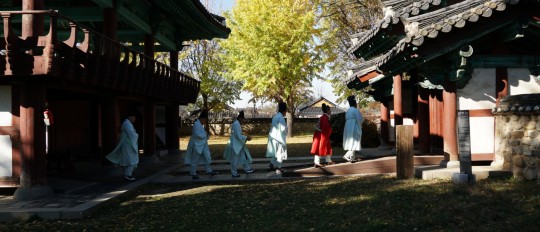
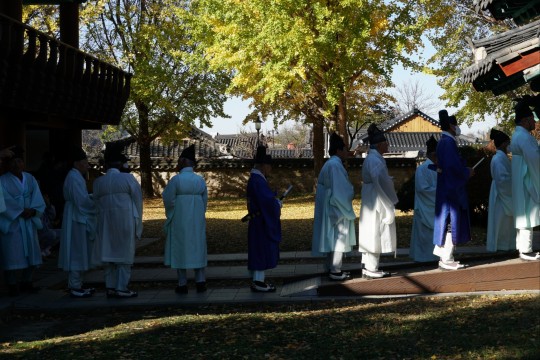
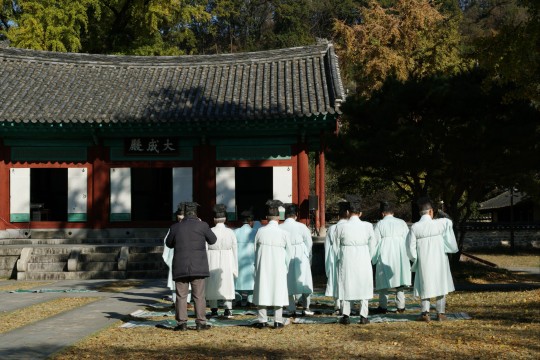
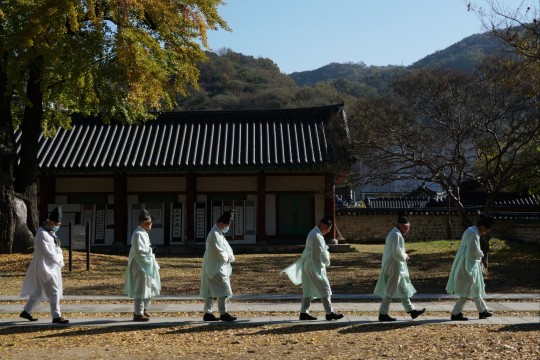

2023.11
Jeonju Hyanggyo, Jeonju, South Korea
27 notes
·
View notes
Text
Seoul culture🇰🇷
Museums
Seoul is home to 115 museums, including four national and nine official municipal museums. The National Museum of Korea has a collection of 220,000 artifacts. The National Folk Museum is located on the grounds of Gyeongbokgung and focuses on the daily life of historical Koreans. Bukchon Hanok Village and Namsangol Hanok Village are old residential districts consisting of hanok (traditional Korean houses).
The War Memorial covers the history of wars that Korea has been involved with, especially the Korean War.[132][133] Seodaemun Prison is a former prison built during the Japanese occupation, and is used as a historic museum. The Seoul Museum of Art, Leeum, Samsung Museum of Art, and Ilmin Museum of Art are art museums in the city.
Religious monuments
The city has buildings related to a number of religions. The Wongudan altar has been used since the Three Kingdoms Period. There are also a number of Confucian shrines, such as Jongmyo, Sajikdan, Munmyo, and Dongmyo. For Buddhism, Jogyesa is the headquarters of the Jogye Order of Korean Buddhism. Hwagyesa and Bongeunsa are also major Buddhist temples in Seoul.
The Myeongdong Cathedral is a landmark of the Myeongdong, Jung District. Yakhyeon Catholic Church is the first Gothic church to be built in Korea. Yoido Full Gospel Church is a Pentecostal church affiliated with the Assemblies of God on Yeouido in Seoul. The St. Nicholas Cathedral, but sometimes called bald church, is the only Byzantine-style church in Seoul.
Festivals
In October 2012, KBS Hall in Seoul hosted major international music festivals – First ABU TV and Radio Song Festivals within frameworks of Asia-Pacific Broadcasting Union 49th General Assembly. Hi! Seoul Festival is a seasonal cultural festival held four times a year every spring, summer, autumn, and winter in Seoul, South Korea since 2003. It is based on the "Seoul Citizens' Day" held on every October since 1994 to commemorate the 600 years history of Seoul as the capital of the country. The festival is arranged under the Seoul Metropolitan Government. As of 2012, Seoul has hosted Ultra Music Festival Korea, an annual dance music festival that takes place on the 2nd weekend of June.
Seoul has a large quantity of parks. One of the most famous parks is Namsan Park, which offers recreational hiking and views of the downtown Seoul skyline, especially via its N Seoul Tower. Seoul Olympic Park, located in Songpa District and built to host the 1988 Summer Olympics, is the largest park. The areas near the stream Tancheon are popular for exercise. Cheonggyeche
Architecture 🏙️
The traditional heart of Seoul is the old Joseon dynasty city, now the downtown area, where most palaces, government offices, corporate headquarters, hotels, and traditional markets are located. Cheonggyecheon, a stream that runs from west to east through the valley before emptying into the Han River, was for many years covered with concrete, but was recently restored by an urban revival project in 2005. Jongno street, meaning "Bell Street", has been a principal street and one of the earliest commercial streets of the city, on which one can find Bosingak, a pavilion containing a large bell. The bell signaled the different times of the day and controlled the four major gates to the city. North of downtown is Bukhan Mountain, and to the south is the smaller Namsan. Further south are the old suburbs, Yongsan District and Mapo District. Across the Han River are the newer and wealthier areas of Gangnam District, Seocho District and surrounding neighborhoods.
Historical architecture
Seoul has many historical and cultural landmarks. In Amsa-dong Prehistoric Settlement Site, Gangdong District, neolithic remains were excavated and accidentally discovered by a flood in 1925.
Urban and civil planning was a key concept when Seoul was first designed to serve as a capital in the late 14th century. The Joseon dynasty built the "Five Grand Palaces" in Seoul—Changdeokgung, Changgyeonggung, Deoksugung, Gyeongbokgung and Gyeonghuigung—all of which are located in the Jongno and Jung Districts. Among them, Changdeokgung was added to the UNESCO World Heritage List in 1997 as an "outstanding example of Far Eastern palace architecture and garden design". The main palace, Gyeongbokgung, underwent a large-scale restoration project. The palaces are considered exemplary architecture of the Joseon period. Beside the palaces, Unhyeongung is known for being the royal residence of Regent Daewongun, the father of Emperor Gojong at the end of the Joseon Dynasty.
Seoul has been surrounded by walls that were built to regulate visitors from other regions and protect the city in case of an invasion. Pungnap Toseong is a flat earthen wall built at the edge of the Han River, which is widely believed to be the site of Wiryeseong. Mongchon Toseong is another earthen wall built during the Baekje period that is now located inside the Olympic Park. The Fortress Wall of Seoul was built early in the Joseon dynasty for protection of the city. After many centuries of destruction and rebuilding, about 2⁄3 of the wall remains, as well as six of the original eight gates. These gates include the south gate Namdaemun and the east gate Dongdaemun. Namdaemun was the oldest wooden gate until a 2008 arson attack, and was re-opened after complete restoration in 2013. Located near the gates are the traditional markets and largest shopping center, Namdaemun Market and Dongdaemun Market.

Modern architecture
Various high-rise office buildings and residential buildings, like the Gangnam Finance Center, the Tower Palace, Namsan Seoul Tower, and the Lotte World Tower, dominate the city's skyline. The tallest building is Lotte World Tower, reaching a height of 555m. It opened to the public in April 2017. It is also the 6th highest building in the world.
The World Trade Center Seoul, located in Gangnam District, hosts various expositions and conferences. Also in Gangnam District is the COEX Mall, a large indoor shopping and entertainment complex. Downstream from Gangnam District is Yeouido, an island that is home to the National Assembly, major broadcasting studios, and a number of large office buildings, as well as the Korea Finance Building and the Yoido Full Gospel Church. The Olympic Stadium, Olympic Park, and Lotte World are located in Songpa District, on the south side of the Han River, upstream from Gangnam District. Three new modern landmarks of Seoul are Dongdaemun Design Plaza & Park, designed by Zaha Hadid, the new wave-shaped Seoul City Hall, by Yoo Kerl of iArc, and the Lotte World Tower, the 6th tallest building in the world designed by Kohn Pedersen Fox.
In 2010 Seoul was designated the World Design Capital for the year.

1 note
·
View note
Text
WEEK 10 ASSIGNMENT
The national monument I chose is the "Seoul Munmyo Ginkgo Tree" in Korea. This tree is located in Myeongryun-dong, Jongno-gu, Seoul. It has been designated as Korea's National Monument No. 59. The reason why I chose this tree is because it is a magnificent 26m high tree estimated to be about 400 years old, so I really wanted to introduce it. If you visit this tree in autumn, you will be surprised by its magnificent and beautiful appearance. I recommend you to go there later.
3 notes
·
View notes
Text
Ancestor Worship is Idolatry
Ancestor Worship is Idolatry
If you don’t know Jesus Christ as your Lord and Savior you can receive Him into your heart and He can deliver you from darkness and sin and have your name written in His Book of Life. If you are sincere you can say this simple prayer to the Father (it doesn’t have to be word for word): “God, I recognize that I have not lived my life for You up until now. I have been living for myself and that is…
View On WordPress
#africa#ancestor worship#asian culture#bàizǔ#Bible#祭祀#祭禮#incense#intecessors#intermediaries#제사#japan#jìngzǔ#jerye#Jesus Christ#Jongmyo#Korea#Munmyo#prayers for the dead#sorei’ 祖霊#true God#worship dead relatives#拜祖#敬祖
0 notes
Photo

The National Gugak Center, located in Seoul, South Korea, is the primary institution of learning for Korean traditional music.
With a history dating back to the Eumseongseo music institute of the Silla kingdom in the 7th century, The National Center for Korean Traditional Performing Arts was founded under its present name in 1950.
It is dedicated to “preserving and promoting traditional Korean music.” Through academic courses, private study, ensembles, research, and performances, it preserves Korea’s ancient musical traditions, including the ancient court ritual music called aak as well as the ritual music performed for the Jongmyo and the Munmyo.
var quads_screen_width = document.body.clientWidth; if ( quads_screen_width >= 1140 ) { /* desktop monitors */ document.write('<ins class="adsbygoogle" style="display:inline-block;width:468px;height:60px;" data-ad-client="pub-9117077712236756" data-ad-slot="9839843423" >'); (adsbygoogle = window.adsbygoogle || []).push({}); }if ( quads_screen_width >= 1024 && quads_screen_width < 1140 ) { /* tablet landscape */ document.write('<ins class="adsbygoogle" style="display:inline-block;width:468px;height:60px;" data-ad-client="pub-9117077712236756" data-ad-slot="9839843423" >'); (adsbygoogle = window.adsbygoogle || []).push({}); }if ( quads_screen_width >= 768 && quads_screen_width < 1024 ) { /* tablet portrait */ document.write('<ins class="adsbygoogle" style="display:inline-block;width:468px;height:60px;" data-ad-client="pub-9117077712236756" data-ad-slot="9839843423" >'); (adsbygoogle = window.adsbygoogle || []).push({}); }if ( quads_screen_width < 768 ) { /* phone */ document.write('<ins class="adsbygoogle" style="display:inline-block;width:468px;height:60px;" data-ad-client="pub-9117077712236756" data-ad-slot="9839843423" >'); (adsbygoogle = window.adsbygoogle || []).push({}); }
National Gugak Center is the headquarters of Korean traditional performing arts. Music is an essential part of Korean history, which stretches back over five millennia. The spirit of Korean music, the artistic expression of pleasure and excitement, is very much alive in the numerous performances given at the National Gugak Center (henceforth NGC). NGC maintains a variety of assets ranging from the long standing traditions of court and popular music and dance to contemporary musical compositions for today’s audience. NGC’s performing traditions and reinterpretations open a vast new world by broadening the scope of music made in the “here and now” with music that “has yet to come.” NGC’s four pre-eminent performing groups, which are the Court Music Orchestra, the Folk Music Group, the Dance Theater, and the Contemporary Gugak Orchestra, have been at the forefront of reviving ancient court music and dance, traditional chamber music of non-professional musicians, and old popular music that thrived among common people. Furthermore, by conducting studies of the long tradition of Korean music, NGC not only bolsters the preservation and transmission of Korean performing arts, but also elevates these traditions to entirely new heights. In addition, it offers diverse educational programs that promote Korean performing arts at home and abroad. As a national institution, NGC was first established as Eumseongseo during the Silla dynasty (ca 7th century), which later became the Daeakseo of the Goryeo dynasty (at the end of the 10th century) and then the Jangagwon of the Joseon dynasty (1466) before becoming known as it is today. Founded on the principle of “creating the new based upon the old,” NGC continues to cultivate Korean music with the aim of making a contribution to the greater culture of humanity.
National Gugak Center Seoul, South Korea was originally published on HiSoUR Art Collection
0 notes
Photo
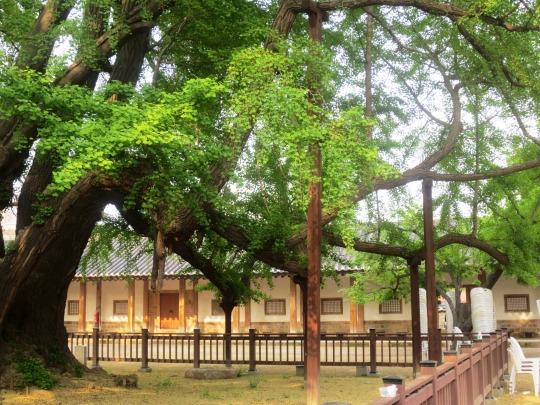
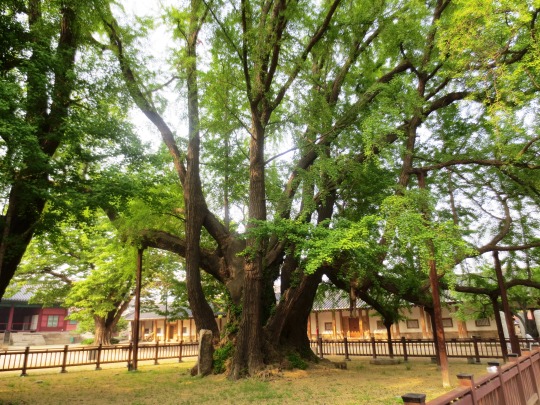
Old Ginkgo Tree at Seoul Munmyo (see the built pillars to support the aging tree)
7 notes
·
View notes
Text






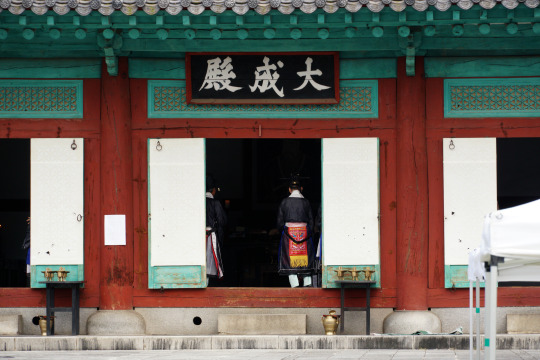




2023.09
Jeonju Hyanggyo, Jeonju, South Korea
#jeonju hyanggyo#jeonju#south korea#asia#seokjeondaeje#ritual#hanbok#hanok#hyanggyo#munmyo#confucianism
2 notes
·
View notes
Text
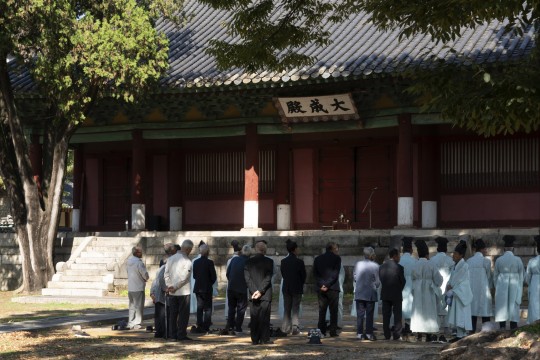
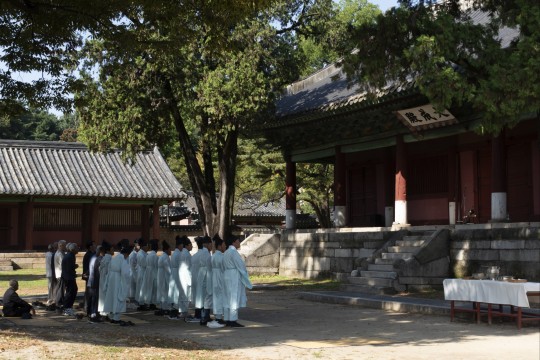

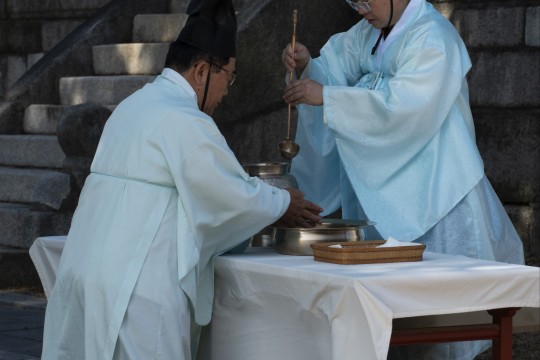


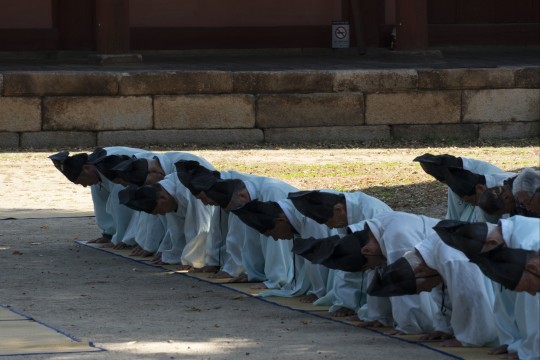
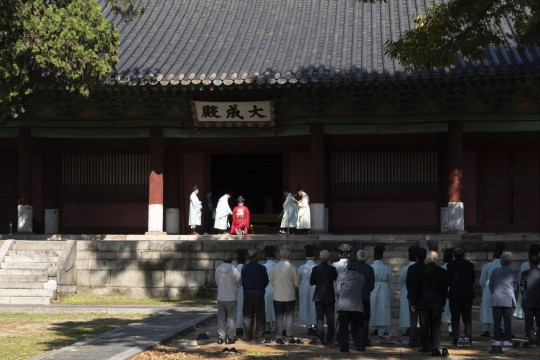


2023.10
Seonggyungwan, Seoul, South Korea
0 notes